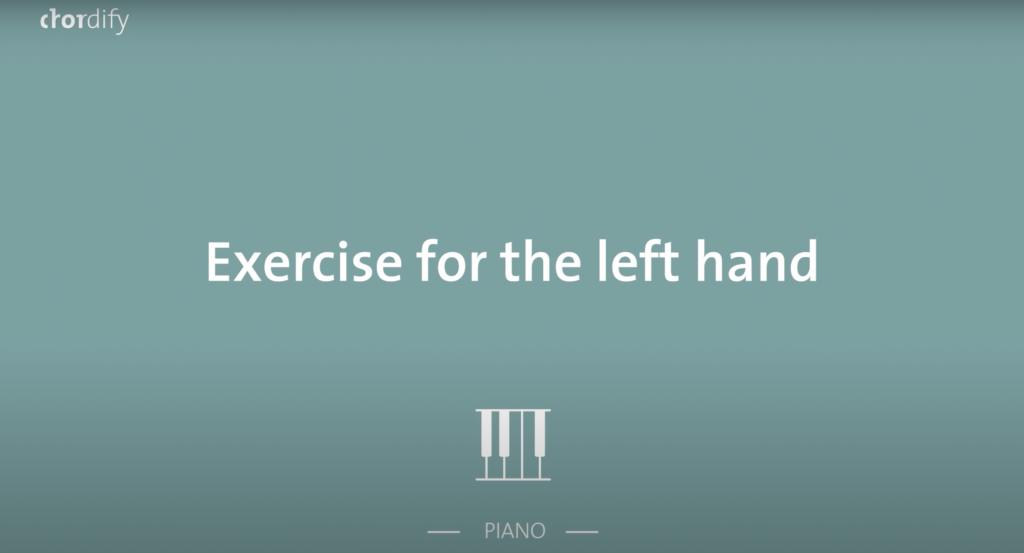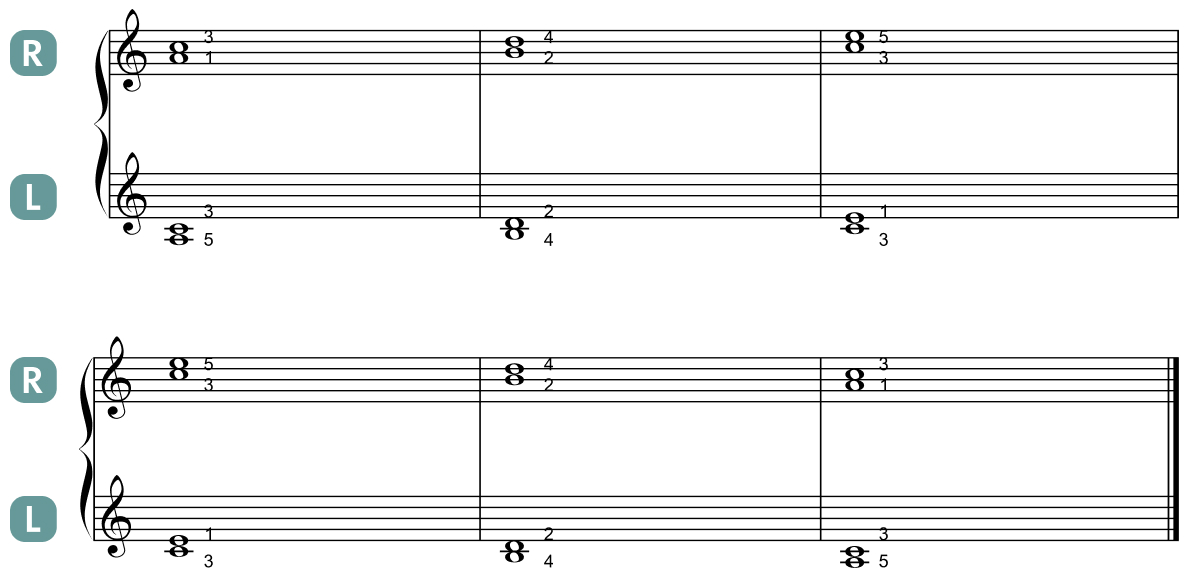Hey piano lovers! Let’s continue to improve our piano skills to be able to play our favorite songs and master our favorite instrument, shall we? Great! In this “Finger Fitness” edition, we’re going to practice playing two notes simultaneously, based on major / minor third musical intervals.
Estimated reading time: 6 minutes
In this Finger Fitness for Piano blog post you’ll find:
Recap of the previous edition
In the previous Finger Fitness edition for piano we talked about:
- Finger names of the left and right hand;

- How to train the fingers of both hands to consistently hit the keys on the keyboard, based on the C major scale.
Playing intervals
In this edition we’ll play two notes on the piano simultaneously, by using two fingers. As before, first we’ll practice with the right hand, then with the left. And at the end, we’ll play with both hands.
Musical intervals form different chords. For instance, the very basic chords – major and minor triads – consist of two intervals of major or minor thirds. Read more about music intervals in our music dictionary.
Let’s take a look at two examples. The F major chord (or F major triad) consists of two intervals – major and minor 3rds:

The A minor chord (or A minor triad) consists of two intervals – minor and major 3rds:

Major and minor thirds are very popular intervals in chords. That’s why in the exercise for this edition we’ll practice these intervals. Of course, you can expand this exercise to playing any intervals you want.
Right hand
We’ll start with the right hand. Let’s stick with the example of the Am chord. There are different scales we can use to play over the A minor chord, depending on the position of that chord in a certain chord progression.
In our exercise, we take the A minor chord without any context of chord progressions. Therefore, the natural A minor scale can be used to play over that chord, which consists of only white piano keys from an A note to the next octave A note.
We’ll play three intervals of major / minor thirds up and down. These thirds will be played on two keys, skipping one key in between. The same goes for fingers – we’ll use two fingers, skipping one finger in between.
Here are these three major / minor thirds in the key of A with corresponding fingers of the Right hand:

Make sure that your arms and shoulders are relaxed while you’re playing. And try to keep the volume of both notes the same.
And here are the note charts for the exercise:

Left hand
Let’s practice playing major / minor thirds up and down for the A minor chord with the left hand, shall we? Here are these three major / minor thirds in the key of A with corresponding fingers of the right hand:

Again, make sure that your arms and shoulders are relaxed while you’re playing. And try to keep the volume of both notes the same.

And here are the note charts for the exercise:

Both hands
After you’ve trained your right and left hands, you can play the same major/minor thirds up and down with both hands at the same time. Here are these three major / minor thirds in the key of A with corresponding fingers of both hands:


And here are the note charts for both hands:

Final thoughts
In this Finger Fitness 2nd edition for Piano, you’ve just learnt how to play intervals of major and minor thirds with different fingers of your right and left hands. These intervals are essential elements of many chords, which you have already played or you’ll learn in the future. So, add this exercise to your daily routine. For some inspiration, check out our Piano Essentials channel. Happy jamming!


